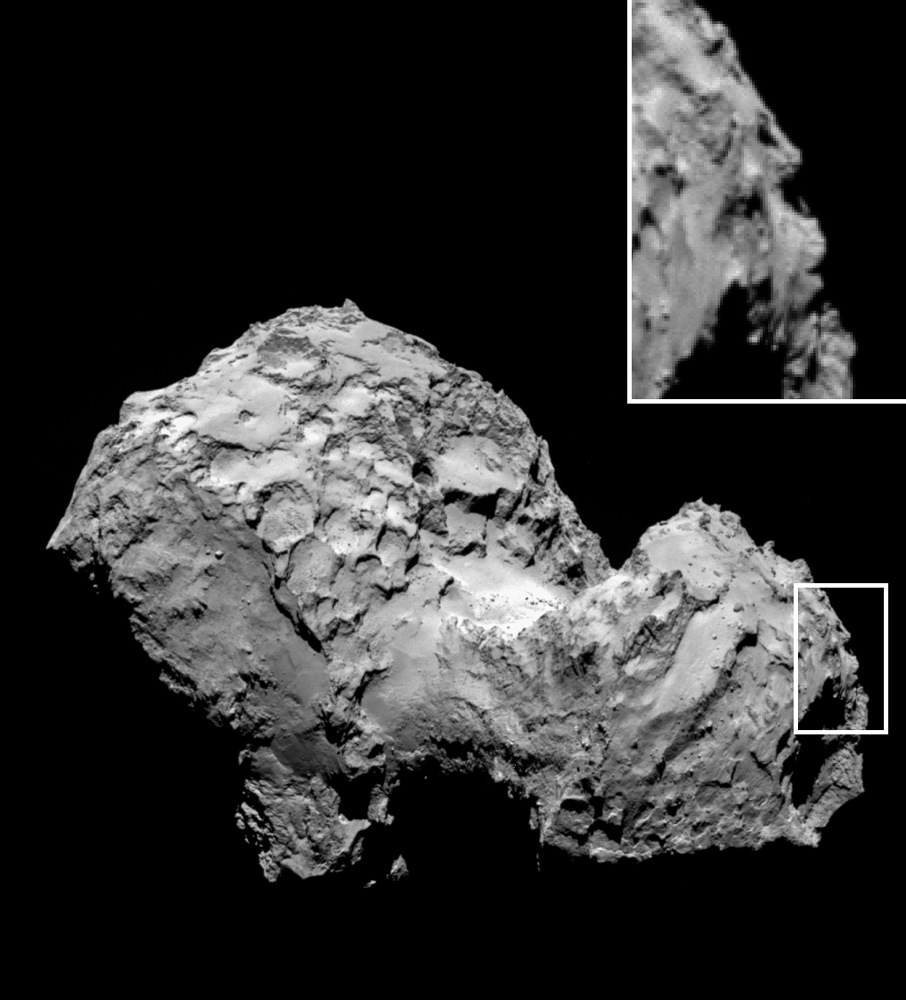'Face' on Comet 67P Spotted by Rosetta Spacecraft (Photo)

If you're a fan of the "Face on Mars," then you might just have a new best friend. A new photo from Europe's Rosetta spacecraft has captured what appears to be a face on a comet in deep space, even if it's only a fun optical illusion.
Rosetta captured the photo of Comet 67P/Churyumov-Gerasimenko on Sunday (Aug. 3) while en route to its historic arrival at the comet earlier today (Aug. 6). The image shows the 2.5-mile-wide (4 kilometers) comet in its entirety, with the face illusion visible on the right side of the comet.
Officials with the German Aerospace Center's youth portal DLR_next (@DLR_next) spotted the optical illusion and pointed it out on Twitterwith several tongue-in-cheek posts today. DLR is one of the European Space Agency members participating in the Rosetta comet-chasing mission.
Schon "the face" entdeckt? ;-) pic.twitter.com/Uk41I9HOAb
Seeing faces in space photos is nothing new. They are examples of pareidolia, in which the human brain perceives faces, animals or other shape patterns in random images.
A photo taken by NASA's Viking 1 Mars orbiter in 1976 sparked infamous claims of a "Face on Mars." Subsequent observations by other spacecraft, like NASA's Mars Global Surveyor and Europe's Mars Express, have proven the Face on Mars was just a trick of light and shadows.
Other examples of false sightings in space include a rat on Mars, an alien Bio Base and — most recently — a strange flash of light captured by NASA's Curiosity rover.
Rosetta arrived at Comet 67P/C-G (as it is known) after a 10-year and 4-billion-mile chase (6.4 billion km) across the solar system. The probe has already begun snapping stunning close-up photos of the comet.
Breaking space news, the latest updates on rocket launches, skywatching events and more!
Rosetta is the first spacecraft ever to orbit a comet and will spend the next year and a half studying Comet 67P/C-G in extraordinary detail. In November, Rosetta is expected to drop its lander Philae onto the comet's surface for an even closer look.
Email Tariq Malik at tmalik@space.com or follow him @tariqjmalik and Google+. Follow us @Spacedotcom, Facebook and Google+. Original article on Space.com.
Join our Space Forums to keep talking space on the latest missions, night sky and more! And if you have a news tip, correction or comment, let us know at: community@space.com.

Tariq is the award-winning Editor-in-Chief of Space.com and joined the team in 2001. He covers human spaceflight, as well as skywatching and entertainment. He became Space.com's Editor-in-Chief in 2019. Before joining Space.com, Tariq was a staff reporter for The Los Angeles Times covering education and city beats in La Habra, Fullerton and Huntington Beach. He's a recipient of the 2022 Harry Kolcum Award for excellence in space reporting and the 2025 Space Pioneer Award from the National Space Society. He is an Eagle Scout and Space Camp alum with journalism degrees from the USC and NYU. You can find Tariq at Space.com and as the co-host to the This Week In Space podcast on the TWiT network. To see his latest project, you can follow Tariq on Twitter @tariqjmalik.
